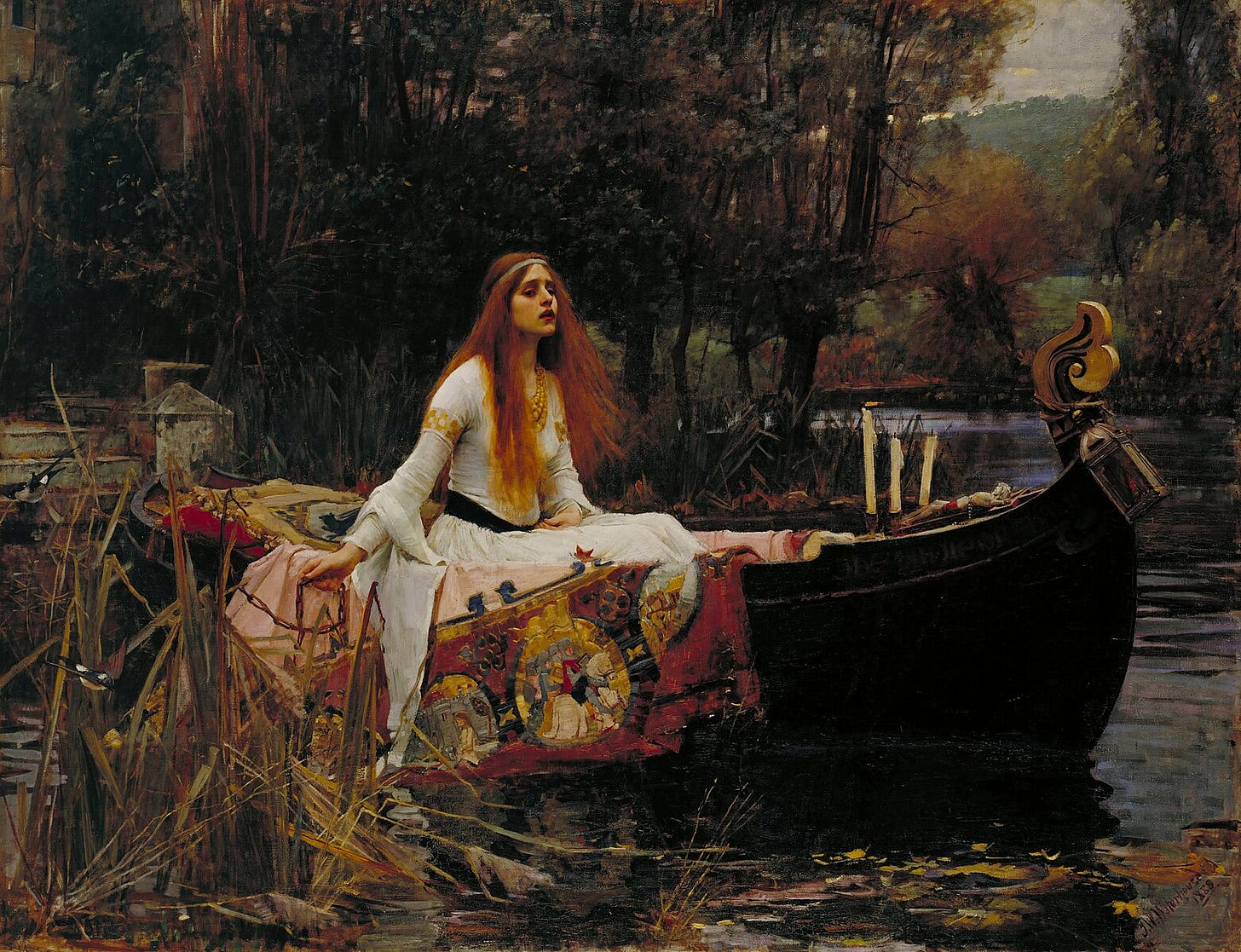The Many Faces of "The Lady of Shalott"
Alfred, Lord Tennyson's enigmatic poem inspired many Pre-Raphaelite adaptations.
This essay is part of the series Art, Myth, and Literature: The Pre-Raphaelites. To read other essays in this series and gain access to the full archive, become a paid subscriber today:

On either side the river lie
Long fields of barley and of rye,
That clothe the wold and meet the sky;
And thro’ the field the road runs by
To many-tower’d Camelot;
And up and down the people go,
Gazing where the lilies blow
Round an island there below,
The island of Shalott.
Willows whiten, aspens quiver,
Little breezes dusk and shiver
Thro’ the wave that runs for ever
By the island in the river
Flowing down to Camelot.
Four gray walls, and four gray towers,
Overlook a space of flowers,
And the silent isle imbowers
The Lady of Shalott.1
In 1842, the writer Alfred Tennyson published a revised version of “The Lady of Shalott,” a poem set in Arthurian England about a lady trapped in a tower. The Lady of Shalott is doomed to weave continuously, and her only view of the outside world is a mirror reflecting the tower’s window. Knights, abbots, and lovers go by—but if she turns to the window, a terrible curse will take effect. Who enacted the curse? And why exactly is the Lady trapped?
The reader never finds out.
Tennyson’s first poetry collection, published in 1832, featured an earlier version of the poem. It received such a lashing from critics that Tennyson didn’t publish again for ten years. He would go on to enjoy a successful career, becoming the United Kingdom’s Poet Laureate for most of the Victorian period, and in 1884, he accepted a baronetcy from Queen Victoria. Henceforth, he was known as Alfred Tennyson, 1st Baron Tennyson—or, more commonly, Alfred, Lord Tennyson.
But it is Alfred, Lord Tennyson’s earlier works, which often found inspiration in an imagined Middle Ages, that would leave a profound impact on the Pre-Raphaelites. His “Lady of Shalott” takes inspiration from Arthurian legends of Elaine of Astolat, who dies of a broken heart due to her unrequited love for Sir Lancelot. In Sir Thomas Malory’s Le Morte d’Arthur (1485), Elaine asks that her body be placed on a boat to Camelot with a letter, in which she explains to Lancelot why she died. In many ways, Tennyson’s Lady of Shalott was the perfect character on which the Pre-Raphaelites could project their aesthetic ideals.


